
Alienware's Area-51 pre-built gaming PC is one of the first that I can recall drooling over as a youngster. It's now been more than 25 years since it first appeared on the scene, and after a brief hiatus, Dell has resurrected the brand in desktop and laptop form.
As it was in the past, Dell reaffirms that its Alienware Area-51 desktop is the best that the company has to offer. Indeed, I was excited to see mention of much easier DIY upgrades, improved airflow despite a lack of a rear exhaust fan, and cutting-edge performance hardware.
Pre-built PCs from Dell are notoriously difficult to upgrade compared to a system you build yourself; standard parts are often sacrificed for style, and I usually recommend Alienware desktop PCs to those who don't plan on making any future upgrades. Dell is looking to change that with the new Area-51, but some design choices remain confusing.
Alienware's Area-51 now uses more standard parts, but some design choices leave me baffled
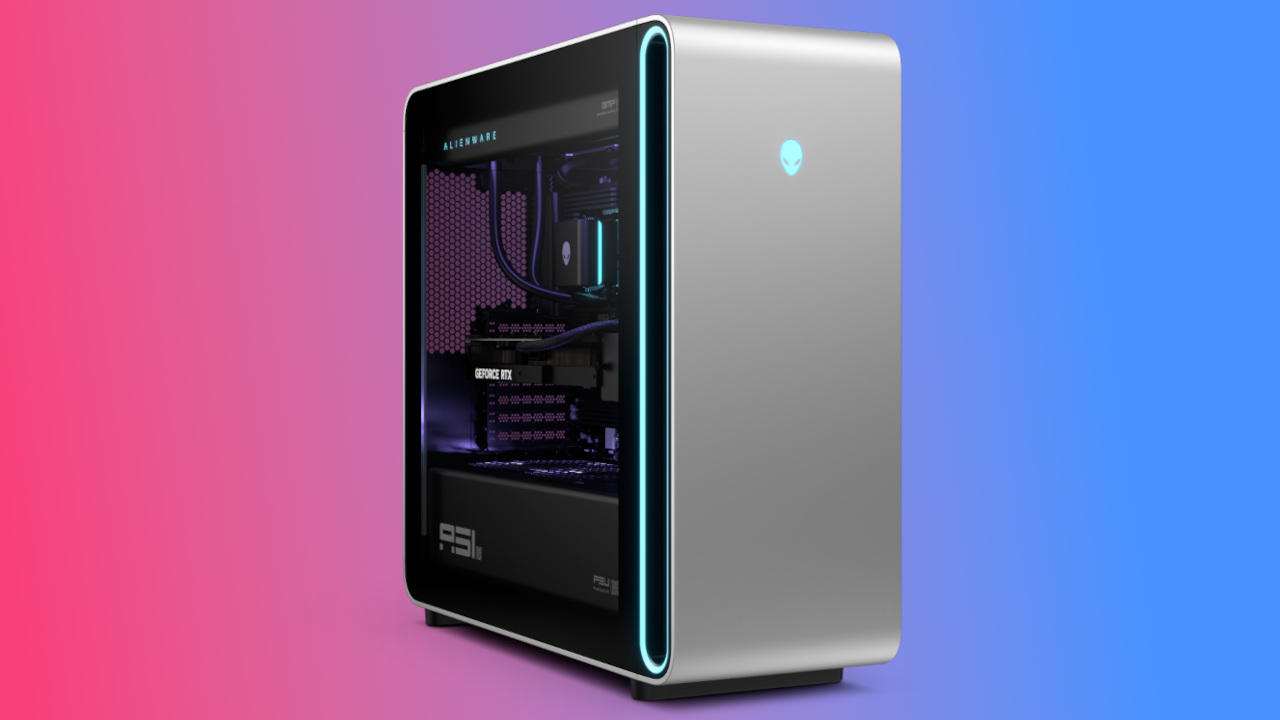
Dell says that "upgradeability is an integral part of the Area-51 customer experience," and I can see that's mostly true. The massive 80L case has quick-release side panels for easy access, and the roomy interior has ample space for your hands and the tools they hold.
Motherboard: Standard ATX, Alienware brand, 14-phase power design, one x16 PCIe 5, one x4 PCIe 4, one x4 PCIe 4
Processor: Up to Intel Core Ultra 9 285K
RAM: 16GB, 32GB 64GB, dual-channel, 2x UDIMM
Storage: Up to dual 4TB M.2 PCIe 4.0 NVMe SSDs; one 2TB M.2 PCIe 5.0 SSD
Graphics: Next-gen NVIDIA RTX desktop GPUs
PSU: Up to 1500W Platinum
Front ports: 3.5mm audio in/out, 2x USB-A 3.2 (Gen 1), 2x USB-C 3.2 (Gen 2)
Rear ports: 2.5GbE, 5x USB-A 2.0, 2x USB-C 3.2 (Gen 2), USB-A 3.2 (Gen 1), 2x Thunderbolt 4, SPDIF
Dimensions: 24.04 (L) x 22.4 (H) x 9.12 (D) inches
Volume: 80.5L
Color: Lunar Silver, Lunar Light
Rather than use proprietary components that aren't easy (or are impossible) to swap out in future upgrades, Dell made the change to industry-standard components in a number of notable areas. It's unclear exactly what brand of RAM, storage, fan, PSU, etc. are in use — leading me to believe it will be Dell's own OEM stuff — but Dell promises that there won't be any surprises when it comes time to upgrade.
It's even going so far as to place QR codes inside the chassis that point to how-to upgrade videos and cleaning tips. Something I always appreciate is removable dust filters; there are three in the Area-51, a definite boon for pet owners.
After years of custom shapes for Alienware motherboards, the Area-51 is leaning into a standard ATX shape. It's an Alienware-branded board, and there's not a lot of info to work with, but I do know that it has a 14-phase power design, a single PCIe 5.0 x16 slot (alongside two PCIe 4.0 x4 slots), and ... two RAM slots?
This is the point where I began scratching my head, wondering if somehow I was mistaken. But no: this flagship, best-of-the-best gaming PC has a motherboard with two UDIMM slots. Introductory models start with a 2x8GB setup and can be expanded to 2x32GB from the factory. A lot of users are only going to use two slots anyway, but not offering the option for four at this level of PC specs is confusing.
Dell says you can swap out the motherboard for something else, but it does require you to purchase separately an AlienFX mounting kit. It's unclear why you can't just drop in a different ATX board as you would in a custom build.
On to brighter news, the Area-51 desktop will be available with NVIDIA's next-gen RTX 5000 GPUs as well as Intel's Core Ultra Series 2 desktop chips. The CPU is liquid-cooled by either a 240mm or 360mm AiO radiator, and the system runs on up to a 1,500W Platinum PSU.
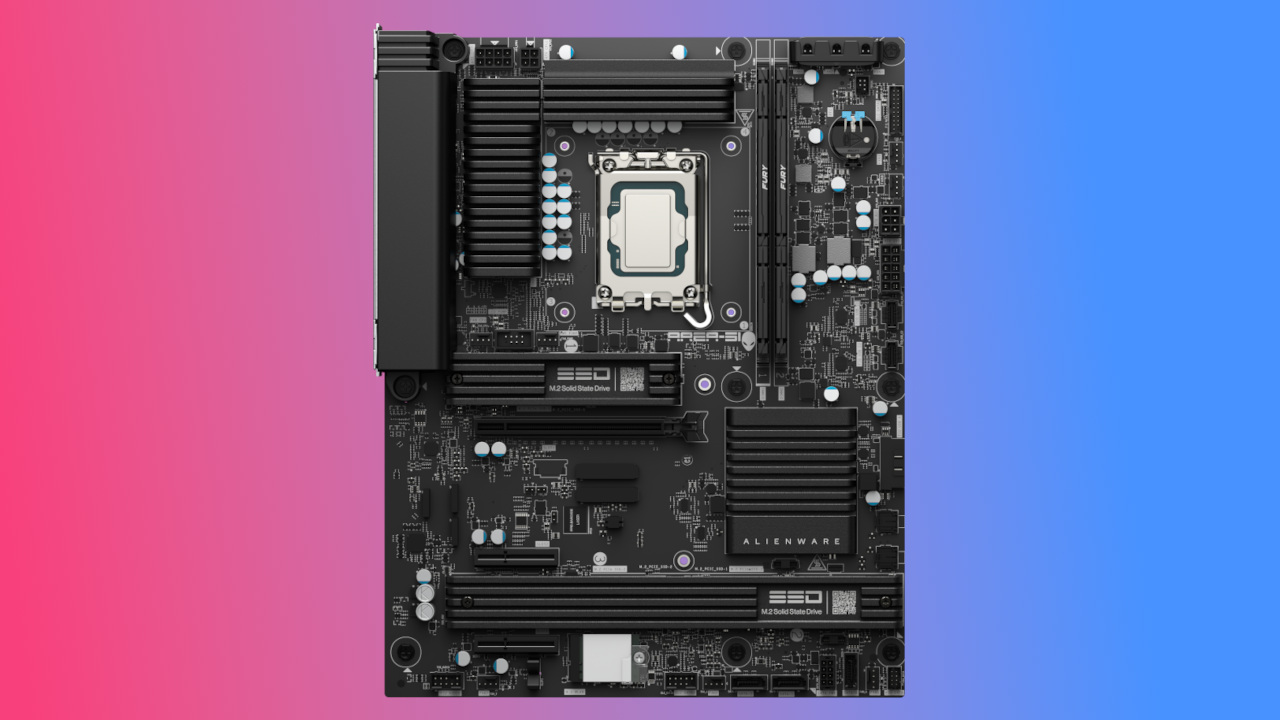
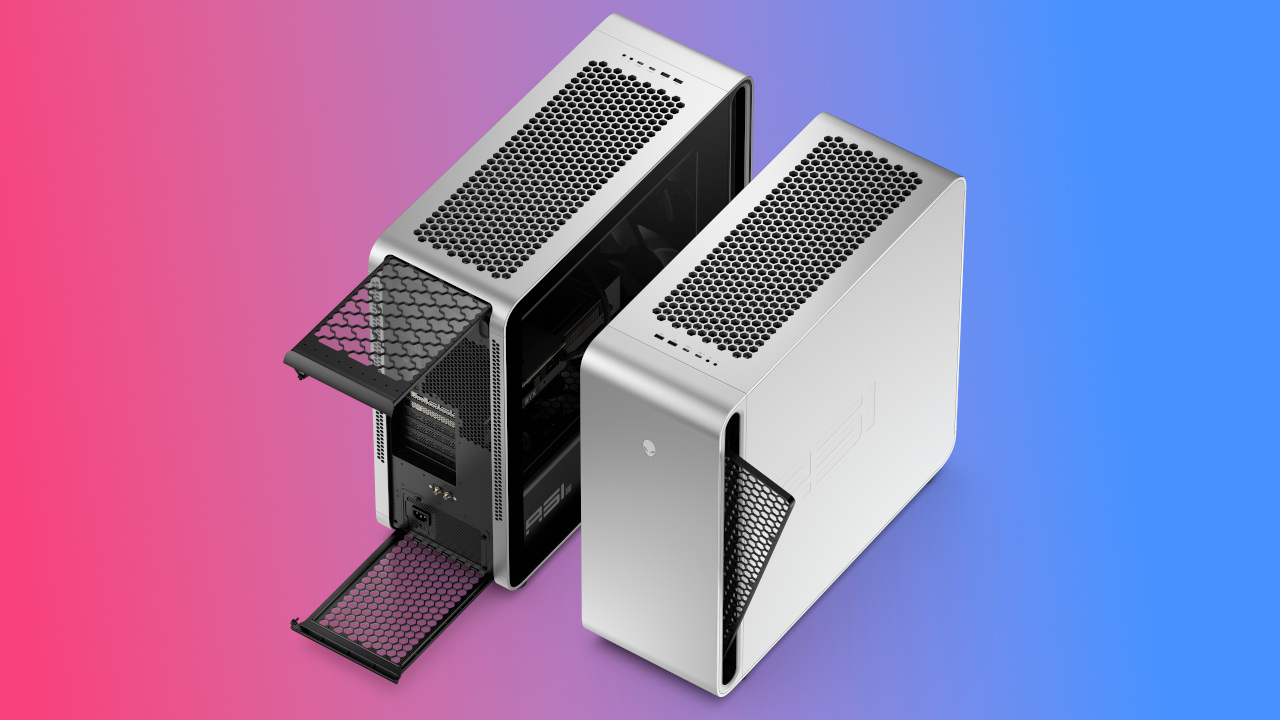
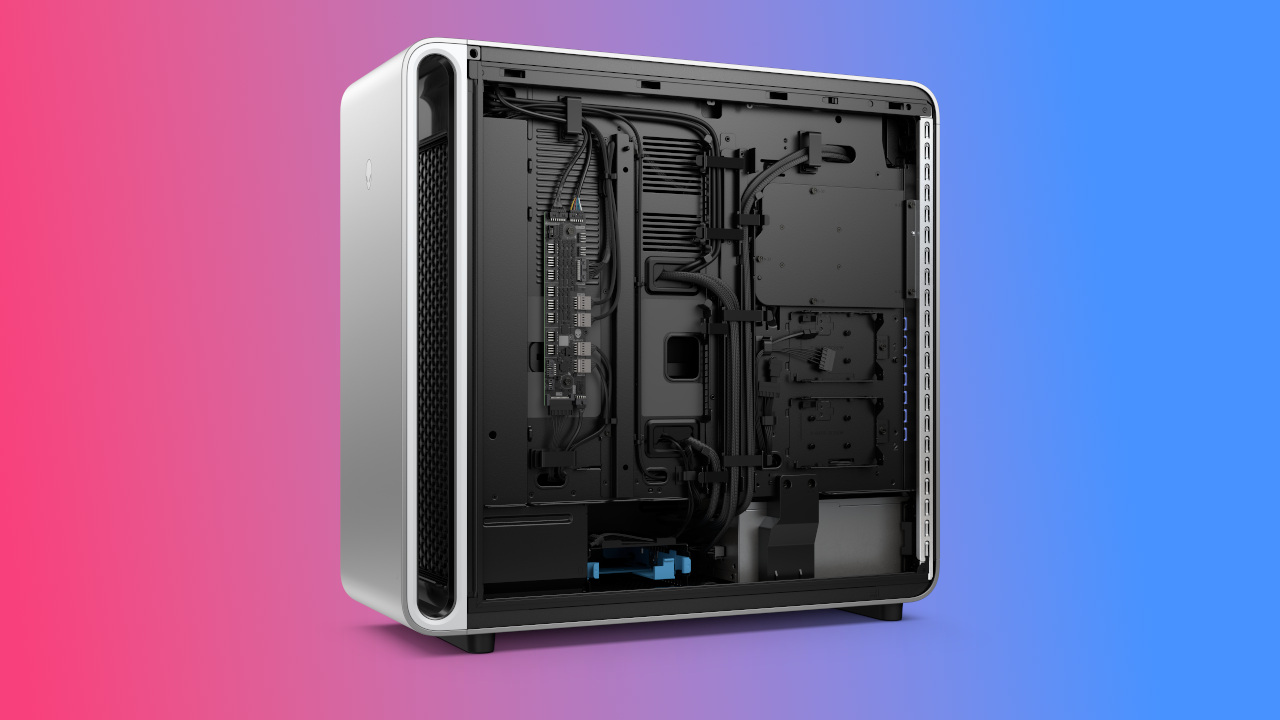
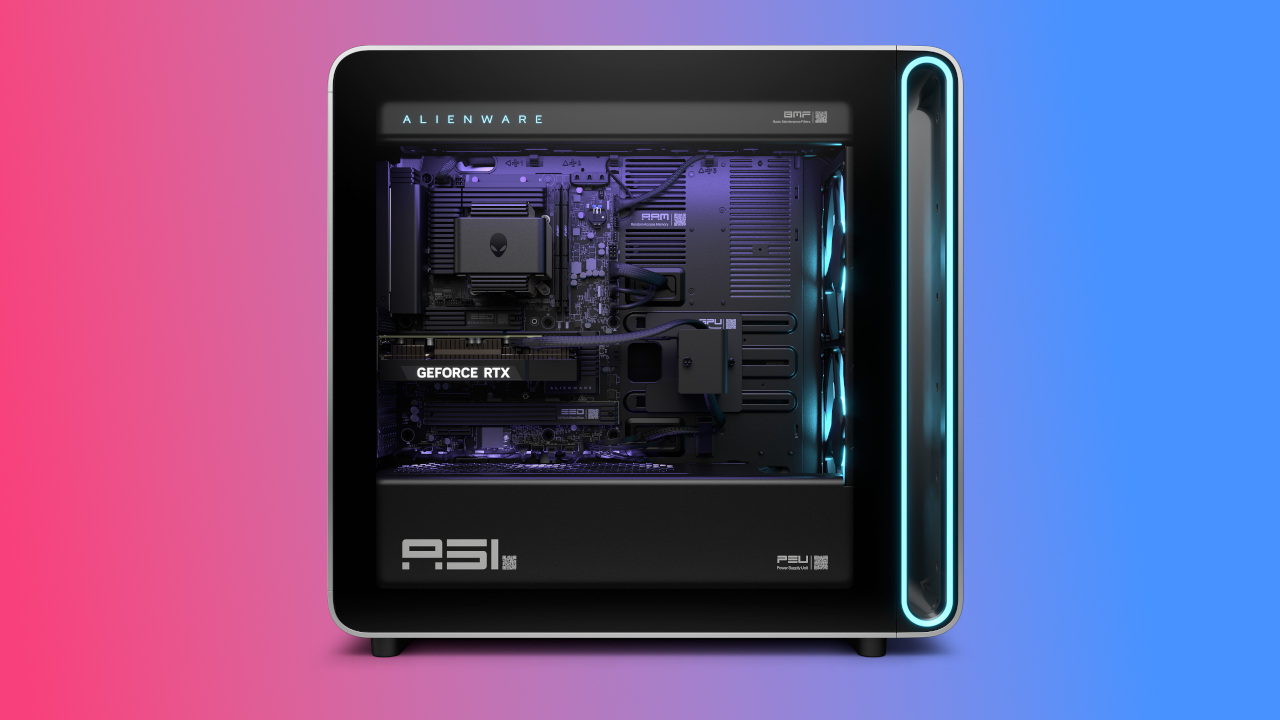
Looking at the product images, it's evident that the PC lacks a rear exhaust port. Dell says it was able to eliminate the spinning blades thanks to a new positive pressure design that naturally sees hot air escape out the back of the PC. Dell says this feature allows for 25% more airflow compared to old models, which in turn drops system noise by 45%. This will be a very interesting aspect to test ourselves when we get our hands on the PC.
The Area-51 desktop is expected to launch in Q1 2025; the launch config is expected to hit $4,499. There will be cheaper models available after launch, for which Dell has yet to confirm exact pricing.
Dell expands and updates more of its gaming hardware at CES 2025
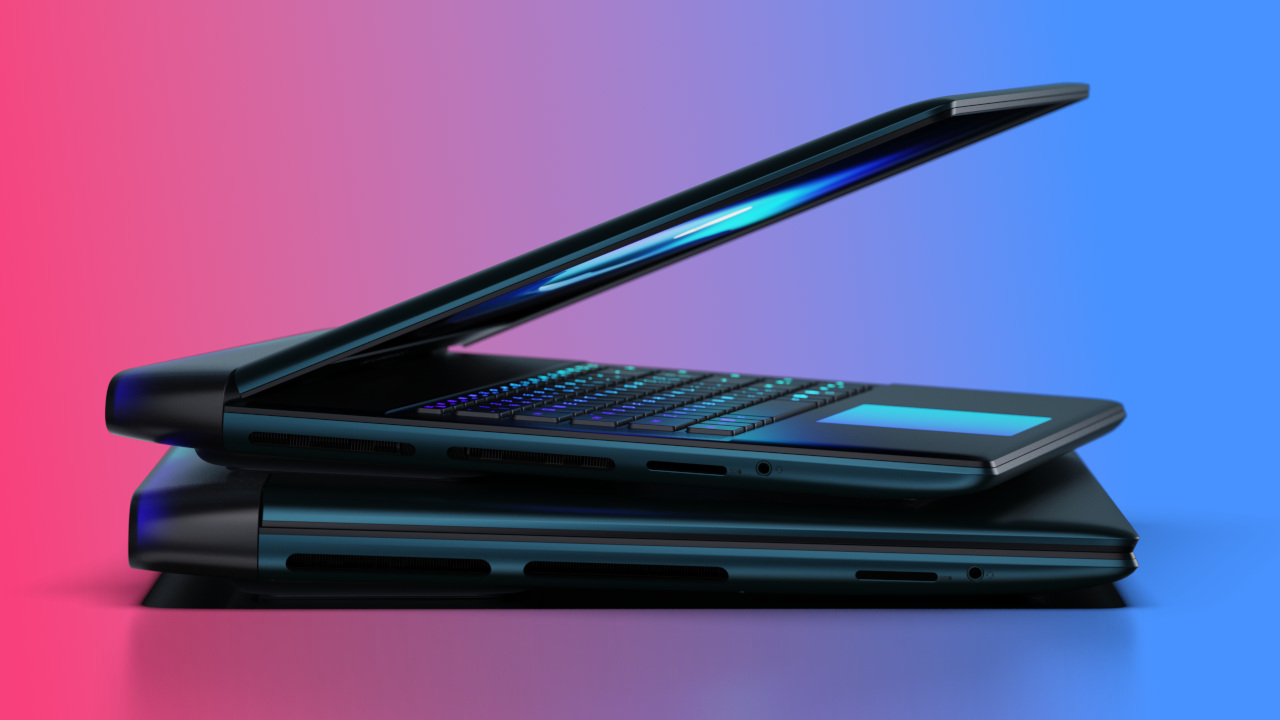
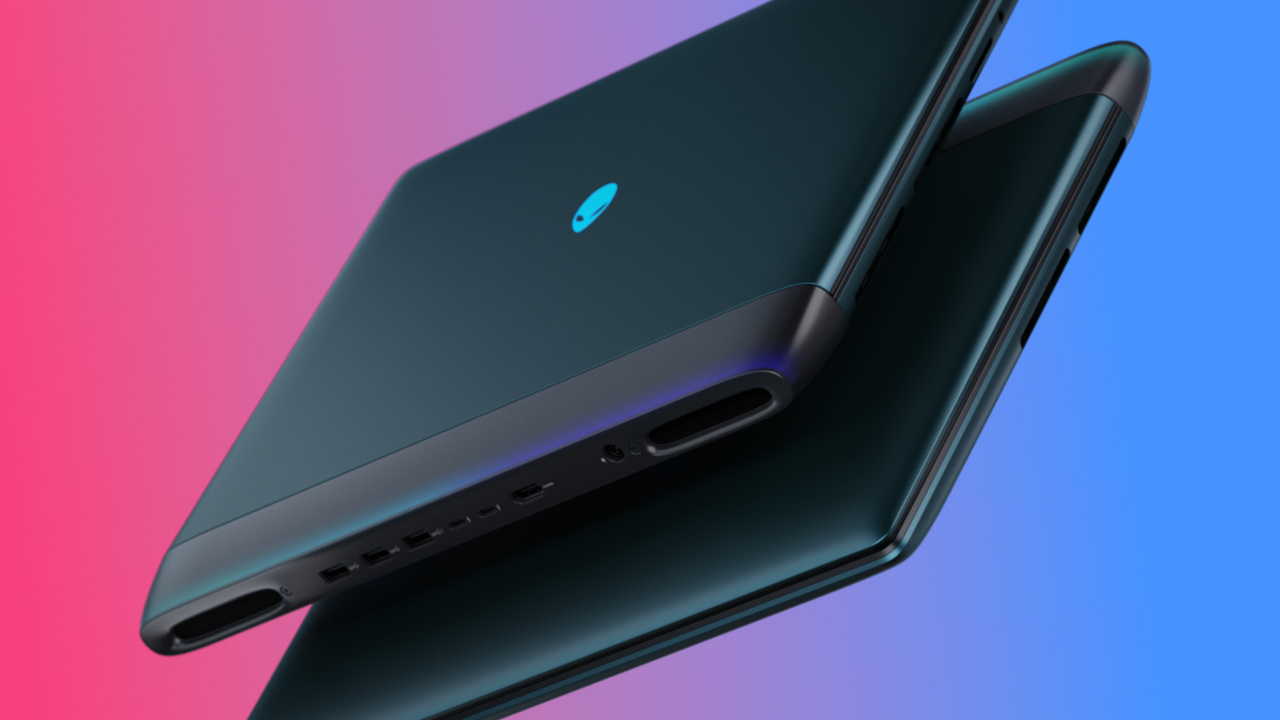
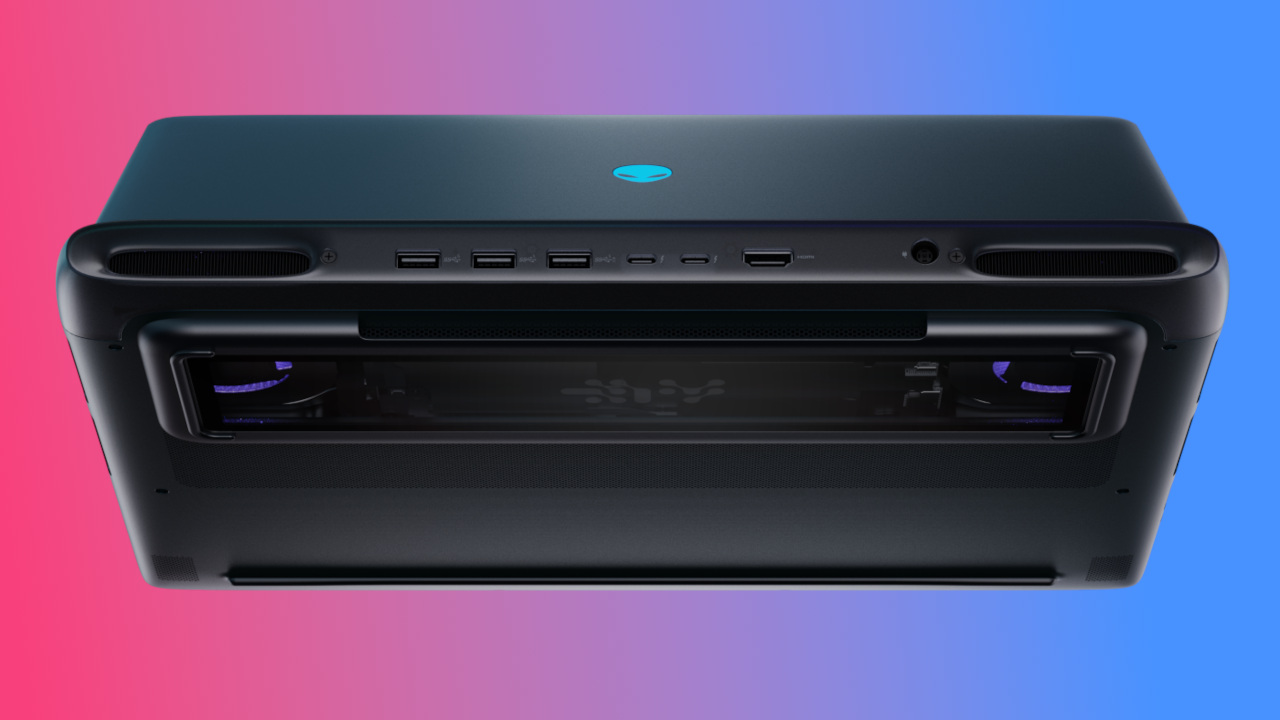
The Area-51 desktop is hogging a lot of the spotlight, but it's well worth noting that new laptops sharing the name are also on the way. Alienware has 16- and 18-inch Area-51 laptops to show off, expected to launch in Q1 2025. Prices will start at about $1,999, running up to about $3,199 for a high-end model.
Both models have a rounded aluminum design that harkens back to Dell's past gaming laptops, with a completely redesigned thermal architecture to keep the monster performance hardware cool. Dell says it can reach up to 280W of total power between the CPU and GPU, which isn't bested by any other gaming laptop on the market.
The bottom of the laptop has a clear glass window to show off the internals, the fans have RGB lighting, the touchpad lights up, and AlienFX lighting is evident in the rear thermal shelf that also houses the bulk of the ports. The laptops are powered by NVIDIA's next-gen mobile GPUs and up to Intel's Core Ultra 9 275HX mobile CPU.
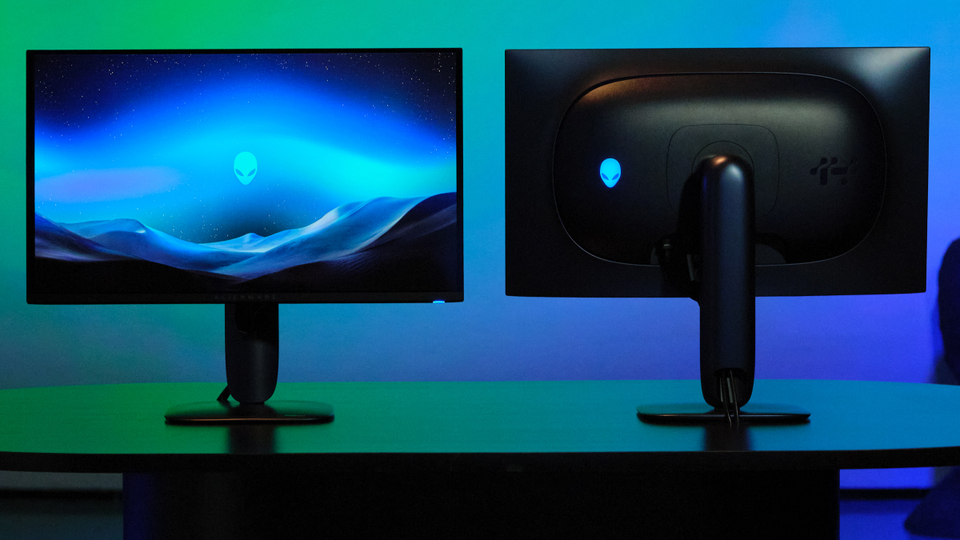
If you're wondering what sort of display to pair with the Area-51 desktop, Dell also announced the Alienware 27 4K QD-OLED gaming monitor. It joins the existing selection of top-rated QD-OLED gaming screens, this time with what Dell is calling "the world's highest pixels per inch in any OLED or QD-OLED monitor." For those counting, a 4K resolution at 27 inches comes out to 166 pixels per inch.
Perhaps more surprising is the monitor's speed. Despite the 4K resolution, the screen boasts a sizzling 240Hz refresh rate and 0.03ms response time, making it suitable for competitive gaming.
Beyond that, it offers G-Sync compatibility, AMD FreeSync Premium Pro, and Dolby Vision certification, with the ability to quickly switch between full sRGB or DCI-P3 color modes depending on the task (or game) at hand.
Dell expects the Alienware 27 4K QD-OLED to enter the market in March 2025 starting at $899.99.







